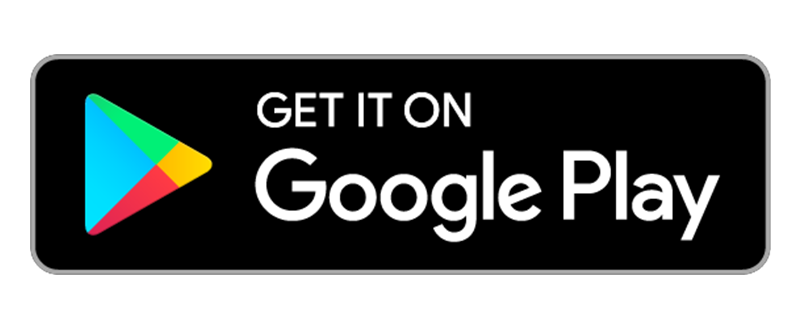

Academic Classes / Class 11 Tuition / CBSE / COMPUTER SCIENCE-11 / Computer- Grade-11
Ritesh Kumar Jaiswal
Masters of Computer Applications from Apeejay Institute of Technology
Student's Reviews
By Several Parameters
CBSE Class 11 Computer Science course is of utmost importance in the educational field. Class 11 Computer Science syllabus covers topics such as computer systems and organization, data management, etc., which gives a basic understanding of the terms related to Computer Science. This course is designed to understand the basics of computers. It will help Class 11 students to develop logic for problem-solving. It aims to enhance problem-solving skills and their implementation using C++.It will act as a guidance to understand and implement the concept of Object-Oriented Methodology.
Students must have the knowledge of Class 10 Computer concepts for this course.
| Course | Fee per Class (In KlassCoins) | Duration | Type |
|---|---|---|---|
| Computer- Grade-11 | 405 | 10 Months | Indiviual Classes |
I am Ritesh Jaiswal, a seasoned web developer with over a decade of experience in crafting robust and user-friendly web applications. My passion lies in utilizing the latest technologies to create immersive and dynamic web experiences. Currently serving as a Lead UI Developer at Conduent, Inc., I am eager to contribute my skills and expertise to a dynamic and professional team, where I can further enhance my capabilities and contribute to achieving organizational goals.I passed my post-graduation (MCA) from Apeejay Institute of Technology in 2005. I have about 17 years of experience in software industry and also have experience to taking online classes in computer subjects. I can teach computer subjects to any grade.
-
Subject Details:
Computer Subjects - Any Grade (including programming)
I specialize in building rich interactive web apps using React JS and Angular JS frameworks. My role involves leading cross-functional teams, collaborating closely with business analysts, and ensuring the seamless execution of projects from conception to implementation. With a solid educational background in Computer Applications and extensive hands-on experience, I am adept at problem-solving, multitasking, and meeting deadlines.
-
Book Published Details:
Not Any
-
Language Known:English, Hindi
-
Total Experiance:17 Years
-
Listening & Questioning Skill:Good
-
Reading Skill:Good
-
Writing Skill:Good
-
Presentation Skill:Very Good
-
Online classes Experiance:2 hours
-
Award Recg:
I have received many awards working in the projects
-
Research Work:No data found.
Degree: Bachelors of Science - University: Purvanchal University
Degree: Masters of Computer Applications - University: Apeejay Institute of Technology
Degree:
CBSE Class 11 Computer Science course is of utmost importance in the educational field. Class 11 Computer Science syllabus covers topics such as computer systems and organization, data management, etc., which gives a basic understanding of the terms related to Computer Science. This course is designed to understand the basics of computers. It will help Class 11 students to develop logic for problem-solving. It aims to enhance problem-solving skills and their implementation using C++.It will act as a guidance to understand and implement the concept of Object-Oriented Methodology.
-
Learning Objectives:
Chapter 1: Computer system
1.1 Introduction to Computer System
1.2 Evolution of Computer
1.3 Computer Memory
1.4 Data Transfer between Memory and CPU
1.5 Microprocessors
1.6 Data and Information
1.7 Software
1.8 Operating System
Chapter 2: Encoding Schemes and Number System
2.1 Introduction
2.2 Number System
2.3 Conversion between Number Systems
Chapter 3: Emerging Trends
3.1 Introduction
3.2 Artificial Intelligence (AI)
3.3 Big Data
3.4 Internet of Things (IoT)
3.5 Cloud Computing
3.6 Grid Computing
3.7 Blockchains
Chapter 4: Introduction To problem solving
4.1 Introduction
4.2 Steps for Problem Solving
4.3 Algorithm
4.4 Representation of Algorithms
4.5 Flow of Control
4.6 Verifying Algorithms
4.7 Comparison of Algorithm
4.8 Coding
4.9 Decomposition
Chapter 5: Getting Started with Python
5.1 Introduction to Python
5.2 Python Keywords
5.3 Identifiers
5.4 Variables
5.5 Comments
5.6 Everything is an Object
5.7 Data Types
5.8 Operators
5.9 Expressions
5.10 Statement
5.11 Input and Output
5.12 Type Conversion
5.13 Debugging
Chapter 6: Flow of Control
6.1 Introduction
6.2 Selection
6.3 Indentation
6.4 Repetition
6.5 Break and Continue Statement
6.6 Nested Loops
Chapter 7: Functions
7.1 Introduction
7.2 Functions
7.3 User Defined Functions
7.4 Scope of a Variable
7.5 Python Standard Library
Chapter 8: Strings
8.1 Introduction
8.2 Strings
8.3 String Operations
8.4 Traversing a String
8.5 String Methods and Built-in Functions
8.6 Handling Strings
Chapter 9: Lists
9.1 Introduction to List
9.2 List Operations
9.3 Traversing a List
9.4 List Methods and Built-in Functions
9.5 Nested Lists
9.6 Copying Lists
9.7 List as Arguments to Function
9.8 List Manipulation
Chapter 10: Tuples and dictionaries
10.1 Introduction to Tuples
10.2 Tuple Operations
10.3 Tuple Methods and Built-in Functions
10.4 Tuple Assignment
10.5 Nested Tuples
10.6 Tuple Handling
10.7 Introduction to Dictionaries
10.8 Dictionaries are Mutable
10.9 Dictionary Operations
10.10 Traversing a Dictionary
10.11 Dictionary Methods and Built-in functions
10.12 Manipulating Dictionaries
Chapter 11: Societal Impact
11.1 Introduction
11.2 Digital Footprints
11.3 Digital Society and Netizen
11.4 Data Protection
11.5 Cyber Crime
11.6 Indian Information Technology Act (IT Act)
11.7 Impact on Health
-
Course Outline:
Unit I: Computer Systems and Organisation ● Basic computer organisation: Introduction to Computer System, hardware, software, input device, output device, CPU, memory (primary, cache and secondary), units of memory ( bit, byte, KB, MB, GB, TB, PB) ● Types of software: System software ( Operating systems, system utilities, device drivers), programming tools and language translators ( assembler, compiler, and interpreter), application software ● Operating System(OS): functions of the operating system, OS user interface ● Boolean logic: NOT, AND, OR, NAND, NOR, XOR, NOT, truth tables and De Morgan’s laws, Logic circuits ● Number System: Binary, Octal, Decimal and Hexadecimal number system; conversion between number systems ● Encoding Schemes: ASCII, ISCII, and Unicode (UTF8, UTF32).
Unit II: Computational Thinking and Programming - I ● Introduction to Problem-solving: Steps for Problem-solving (Analysing the problem, developing an algorithm, coding, testing, and debugging), representation of algorithms using flowchart and pseudocode, decomposition ● Familiarization with the basics of Python programming: Introduction to Python, Features of Python, executing a simple “hello world" program, execution modes: interactive mode and script mode, Python character set, Python tokens( keyword, identifier, literal, operator, punctuator), variables, concept of l-value and R-value, use of comments ● Knowledge of data types: Number(integer, floating point, complex), Boolean, sequence(string, list, tuple), None, Mapping(dictionary), mutable and immutable data types. ● Operators: arithmetic operators, relational operators, logical operators, assignment operators, augmented assignment operators, identity operators (is, is not), membership operators (in not in) ● Expressions, statement, type conversion, and input/output: precedence of operators, expression, evaluation of an expression, type-conversion (explicit and implicit conversion), accepting data as input from the console and displaying output. ● Errors- syntax errors, logical errors, and run-time errors ● Flow of Control: introduction, use of indentation, sequential flow, conditional and iterative flow ● Conditional statements: if, if-else, if-else, flowcharts, simple programs: e.g.: absolute value, sort 3 numbers and divisibility of a number. ● Iterative Statement: for loop, range(), while loop, flowcharts, break and continue statements, nested loops, suggested programs: generating pattern, summation of series, finding the factorial of a positive number, etc. ● Strings: introduction, string operations (concatenation, repetition, membership and slicing), traversing a string using loops, built-in functions/methods–Len(), capitalize(), title(), lower(), upper(), count(), find(), index(), ends with(), starts with(), isalnum(), is alpha(), is digit(), is lower(), is upper(), is space(),strip(), strip(), strip(), replace(), join(), partition(), split() ● Lists: introduction, indexing, list operations (concatenation, repetition, membership and slicing), traversing a list using loops, built-in functions/methods–Len(), list(), append(), extend(), insert(), count(), index(), remove(), pop(), reverse(), sort(), sorted(), min(), max(), sum(); nested lists, suggested programs: finding the maximum, minimum, mean of numeric values stored in a list; linear search on list of numbers and counting the frequency of elements in a list. ● Tuples: introduction, indexing, tuple operations (concatenation, repetition, membership and slicing); built-in functions/methods – Len (), tuple (), count (), index (), sorted (), min (), max (), sum (); tuple assignment, nested tuple; suggested programs: finding the minimum, maximum, mean of values stored in a tuple; linear search on a tuple of numbers, counting the frequency of elements in a tuple. ● Dictionary: introduction, accessing items in a dictionary using keys, mutability of a dictionary (adding a new term, modifying an existing item), traversing a dictionary, built-in functions/methods – Len(), duct(), keys(), values(), items(), get(), update(), del(), del, clear(), from keys(), copy(), pop(), pop item(), set default(), max(), min(), sorted(); Suggested programs: count the number of times a character appears in a given string using a dictionary, create a dictionary with names of employees, their salary and access them. ● Introduction to Python modules: Importing module using ‘import’ and using from statement, importing math module (pi, e, sqrt (), ceil (), floor (), pow (), fabs (), sin (), cos (), tan ()); random module (random (), ran dint (), Rand range ()), statistics module (mean (), median (), mode ()).
Unit III: Society, Law and Ethics ● Digital Footprints ● Digital Society and Netizen: net etiquettes, communication etiquettes, social media etiquettes ● Data Protection: Intellectual property rights (copyright, patent , trademark), violation of IPR(plagiarism, copyright infringement, trademark infringement), open source software and licensing (Creative Commons, GPL and Apache) ● Cyber Crime: definition, hacking, eavesdropping, phishing and fraud emails, ransomware, cyber trolls, cyber bullying ● Cyber safety: safely browsing the web, identity protection, confidentiality ● Malware: viruses, trojans, adware ● E-waste management: proper disposal of used electronic gadgets. ● Information Technology Act (IT Act) ● Technology and society: Gender and disability issues while teaching and using computers.
-
Recomended Audience:
Students who are currently in Class 11 in CBSE Board.
-
Pre-Requisite Requirement:
Students must have the knowledge of Class 10 Computer concepts for this course.
-
Course Level:Intermediate
-
Language of Teaching:English, Hindi
-
Class Schedule Availiability:Morning


